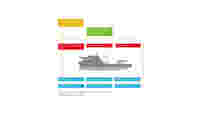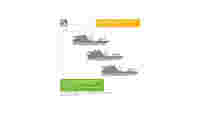Cybersecurity on Ships

With increased digitization and networking aboard ships, the risk for data abuse and cybercrime also increases. Anyone considering the possibilities of Maritime 4.0 must also consider the increased requirements for cybersecurity – and more importantly, find suitable solutions for implementing it.
A ship's various intelligent subsystems ensure problem-free operation: from tank and ballast water management through drive control up to alarm and monitoring systems. They all function using industrial automation technology.
Cybersecurity on Ships – This Is How WAGO Helps:
- As networking in the marine sector increases, so does the exchange of sensitive data.
- Electronics such as navigation, tracking and collision warning systems require off-ship connections, thus creating a potential target for cybercriminality. With “IT Security by Design,” a layer-based security architecture is integrated into the controllers from the start.
- WAGO establishes such VPN tunnels using OpenVPN or IPsec directly from the WAGO PFC200 Controller, for example.








